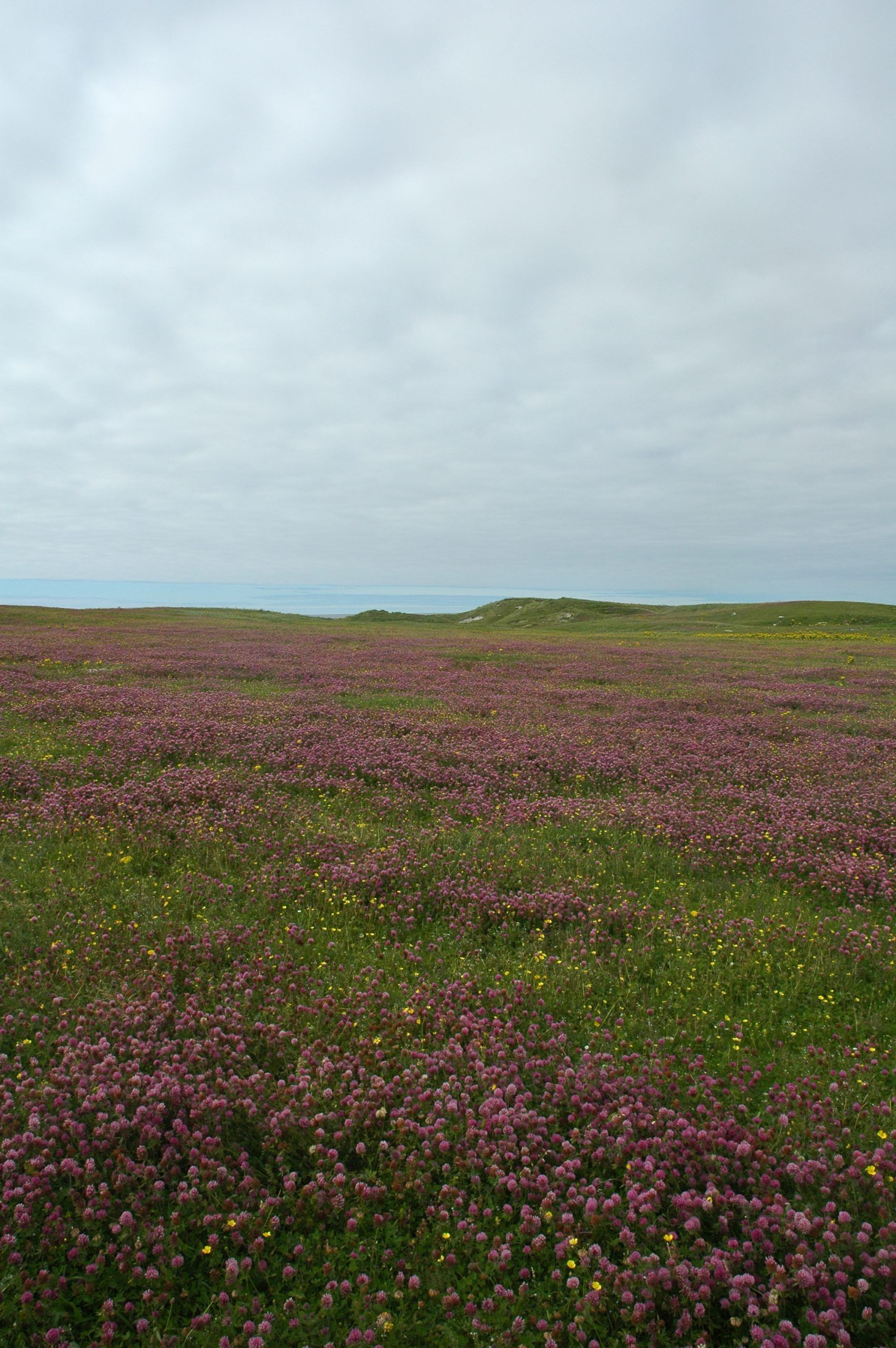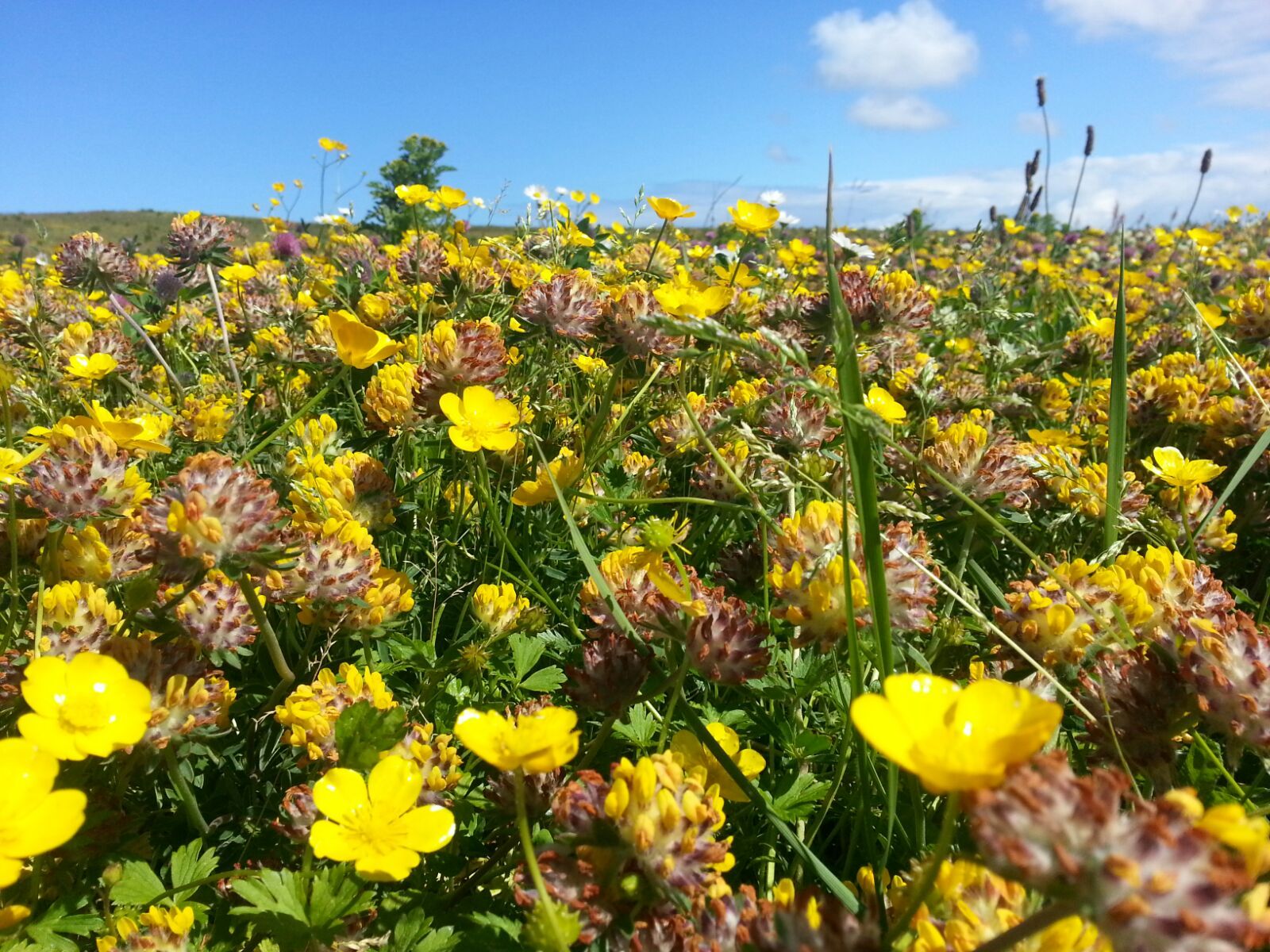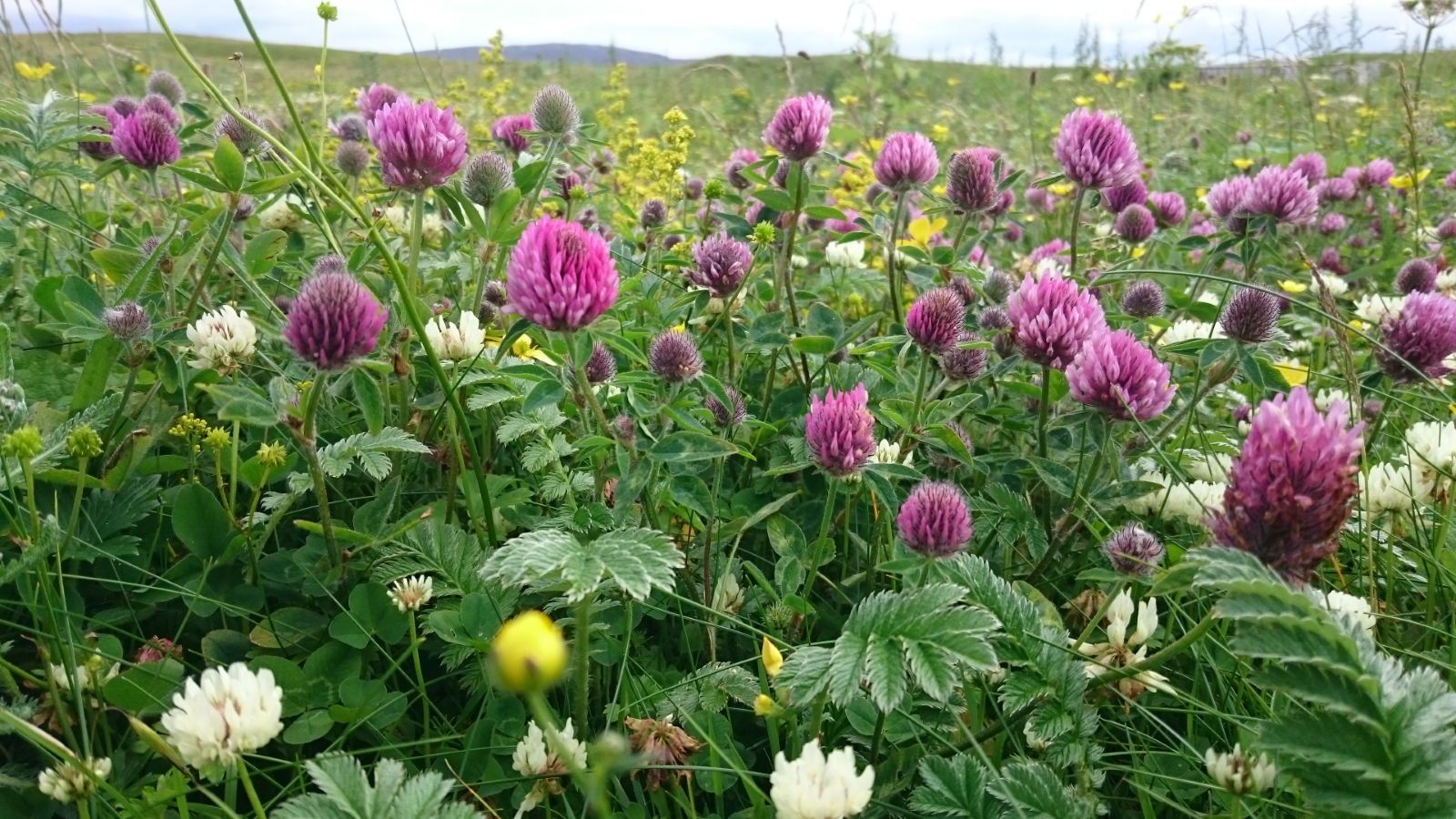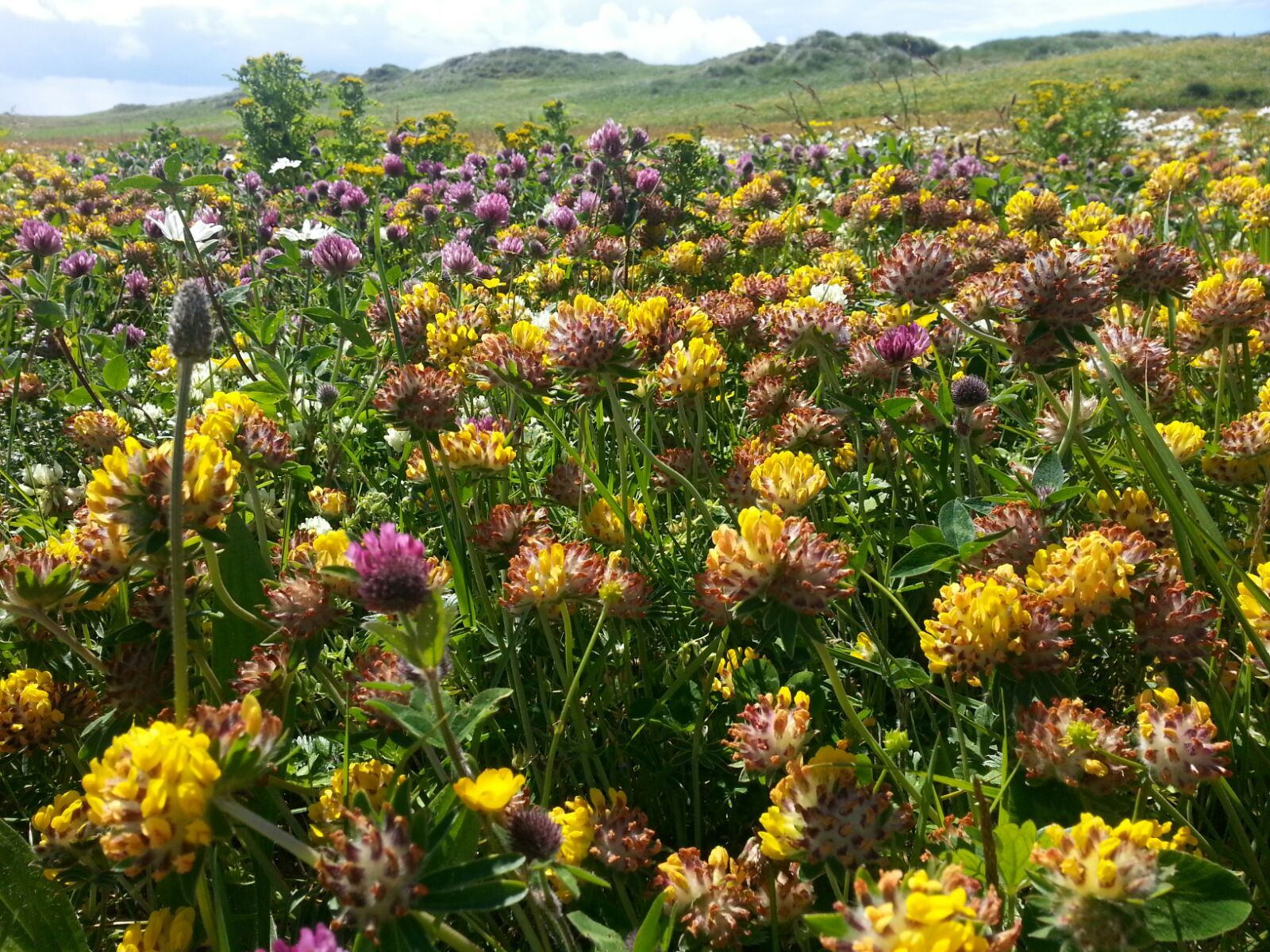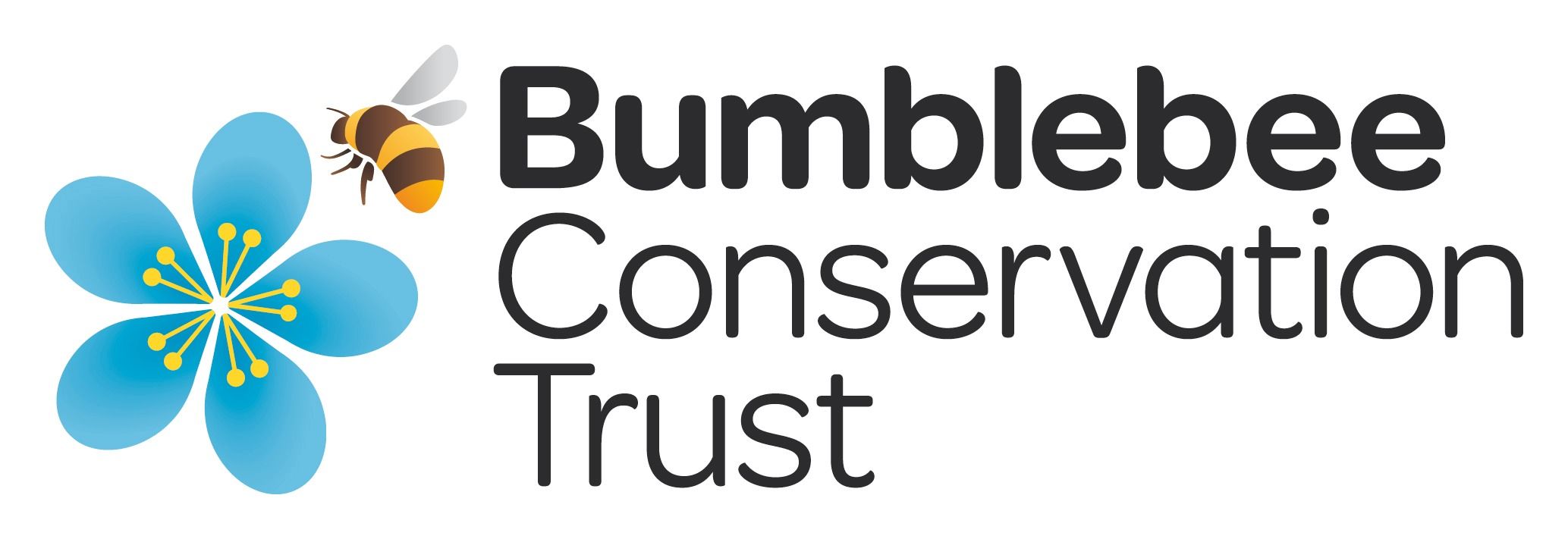Machair is a coastal habitat, unique to the north west of Scotland and Ireland. In Scotland, it is found on the Atlantic coast of the mainland and on the islands of the Inner and Outer Hebrides, Orkney, and Shetland. Often described as a true living landscape, Machair is the result of people and nature working together for centuries. Low-lying coastland with shell-based sands, strong winds, rainfall and salt spray combine with traditional low-intensity agricultural practices to form this unique, cultivated habitat, rich in wildflowers and wildlife.
Machair is one of our most species-rich grasslands, packed with flowers like Red clover, Kidney vetch, Bird’s foot-trefoil and Thyme. The habitat contains some rare gems like the Hebridean-spotted Orchid, Irish lady’s tresses orchid and the Scottish Primrose, but the majority of flower species are not unique to the habitat. Instead, it is the sheer number of species within the habitat that make it so special, and which combine for a truly spectacular floral display throughout the summer months.
Many bird species use the habitat, including Corn bunting, Corncrake and breeding waders like lapwing, redshank snipe and Oystercatchers. It is also home to some of our most threatened bee species, like the Great Yellow bumblebee, the Moss carder bee and the Northern Colletes bee.
Action Needed
Promote action to tackle climate change.
Raise awareness of the importance of this habitat and support the traditional crofting practices that help create it. Policy interventions are needed, such as ensuring the Crofting National Development Plan is fully implemented and developing agri-environment support schemes to maintain the economic viability of traditional practices.
Threats
Economic challenges are leading to a reduction in traditional grazing and crofting practices, particularly those that use seasonal cattle, late hay cuts and low-intensity rotational cropping.
Being a low-lying coastal habitat with delicately balanced oceanic climatic conditions, Machair is one of our habitats most threatened by climate change. Increased storm frequency, intensity and rising sea levels increases erosion
Overgrazing and erosion caused by rabbits
Reduced protection from storms due to off shore kelp-bed damage.
MSP Nature Champion

Member for:

